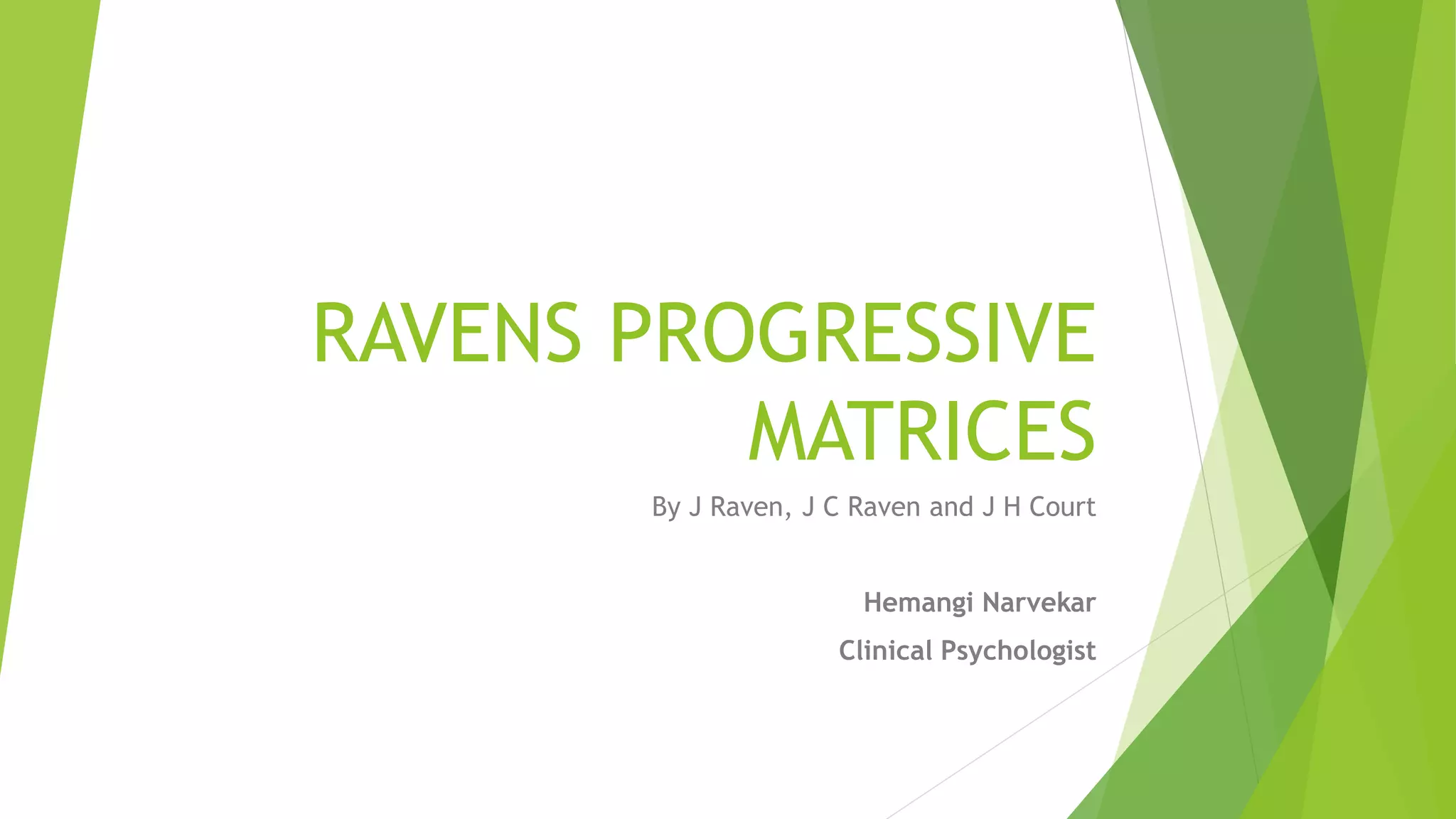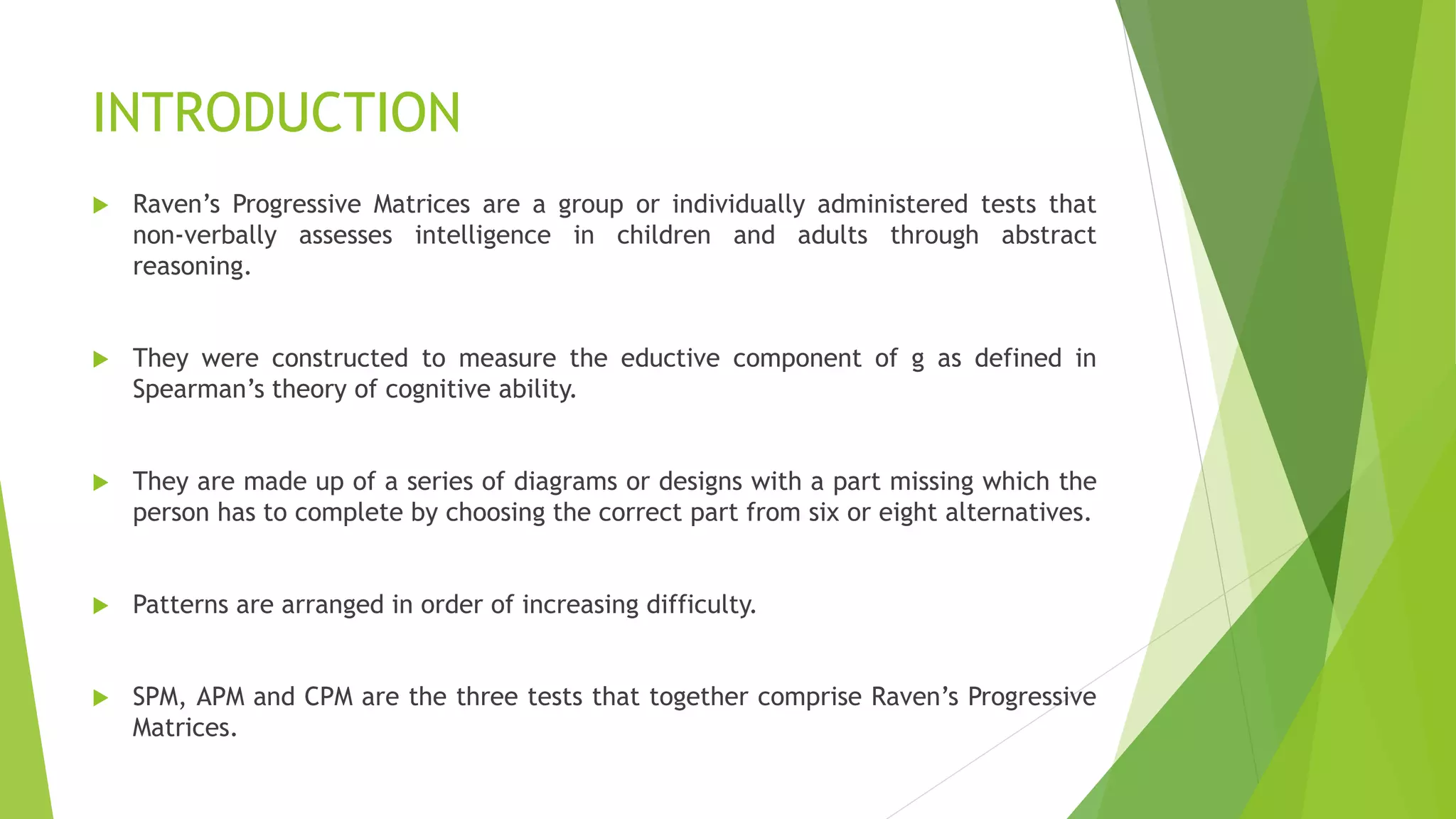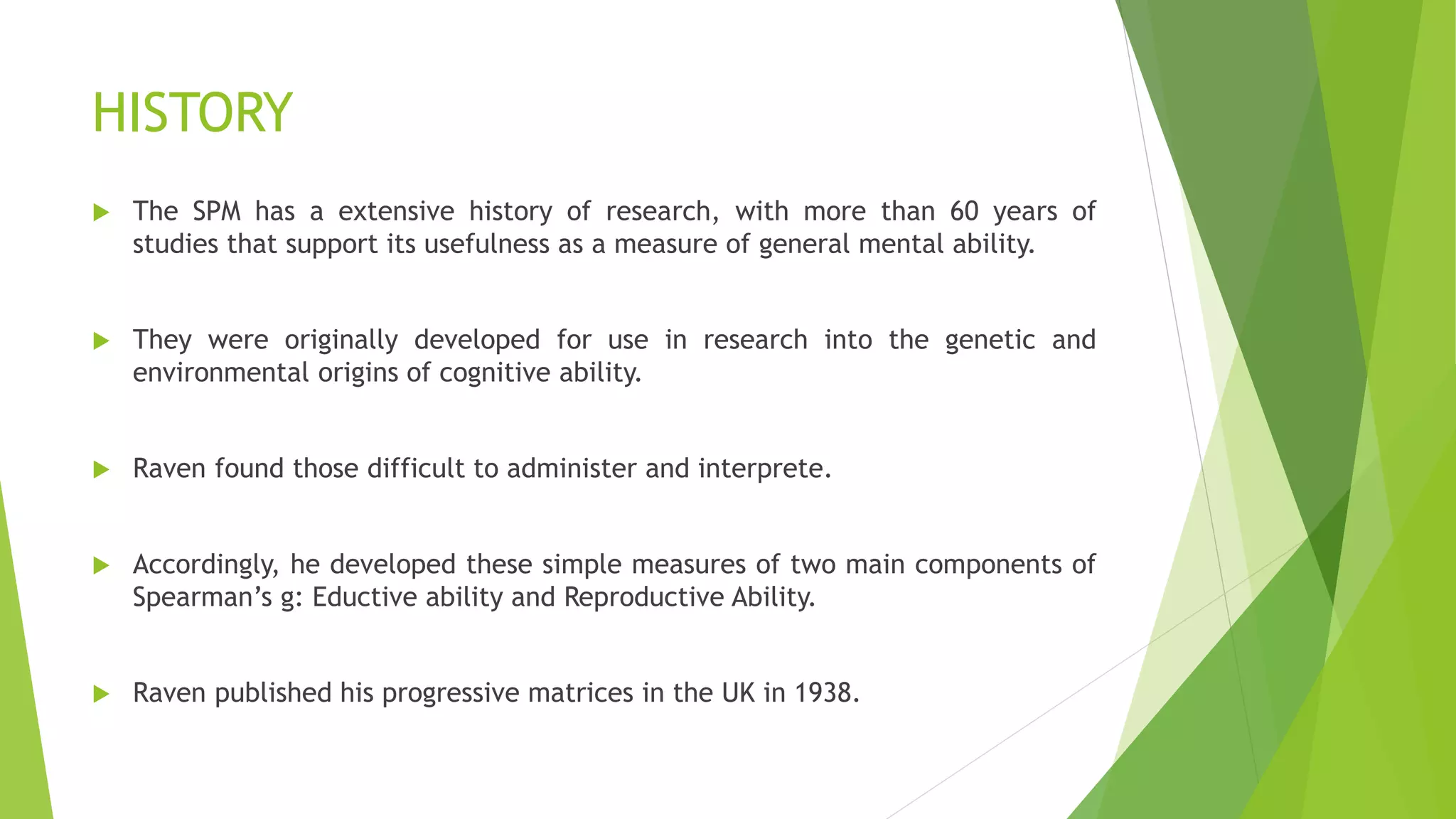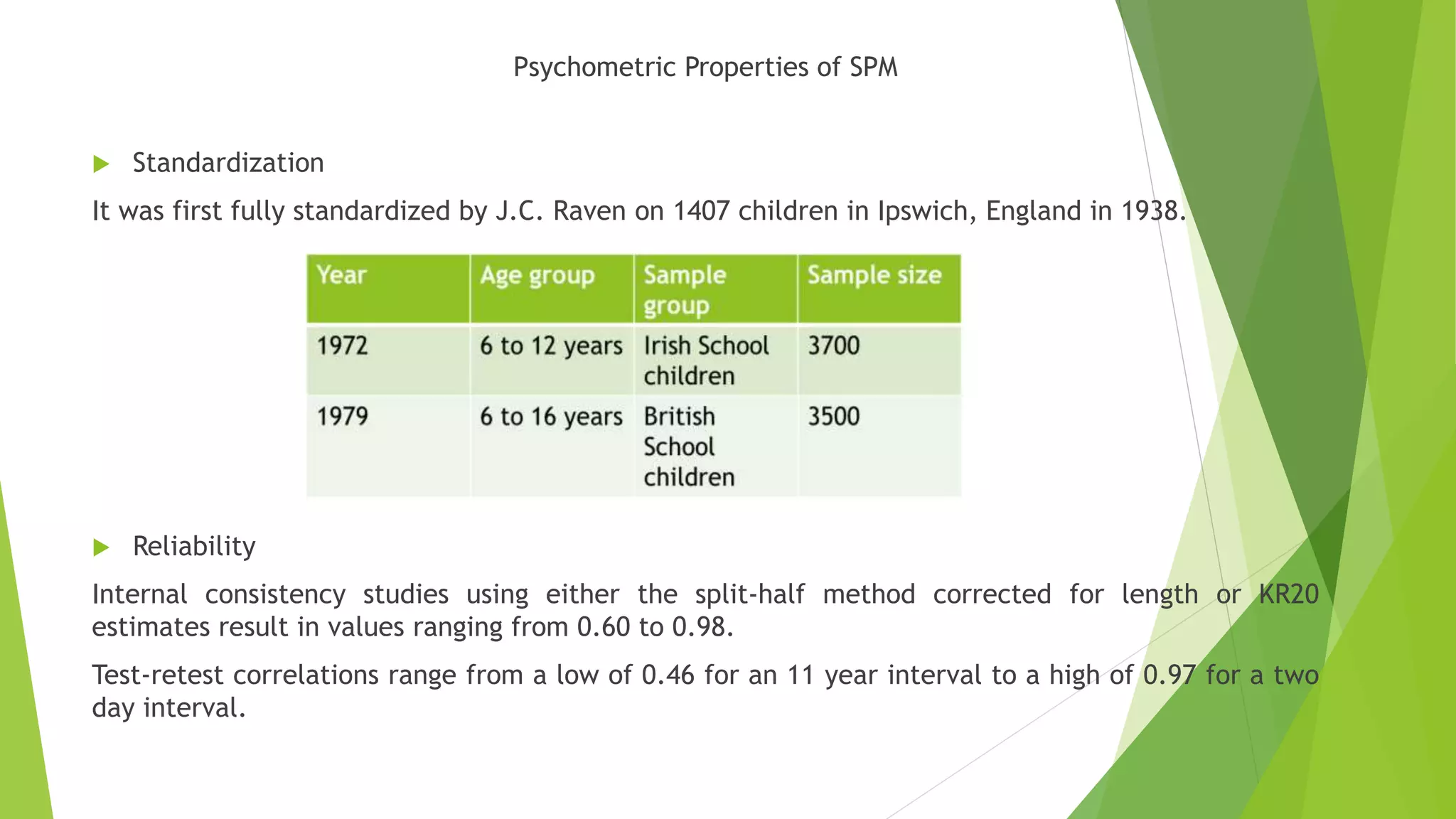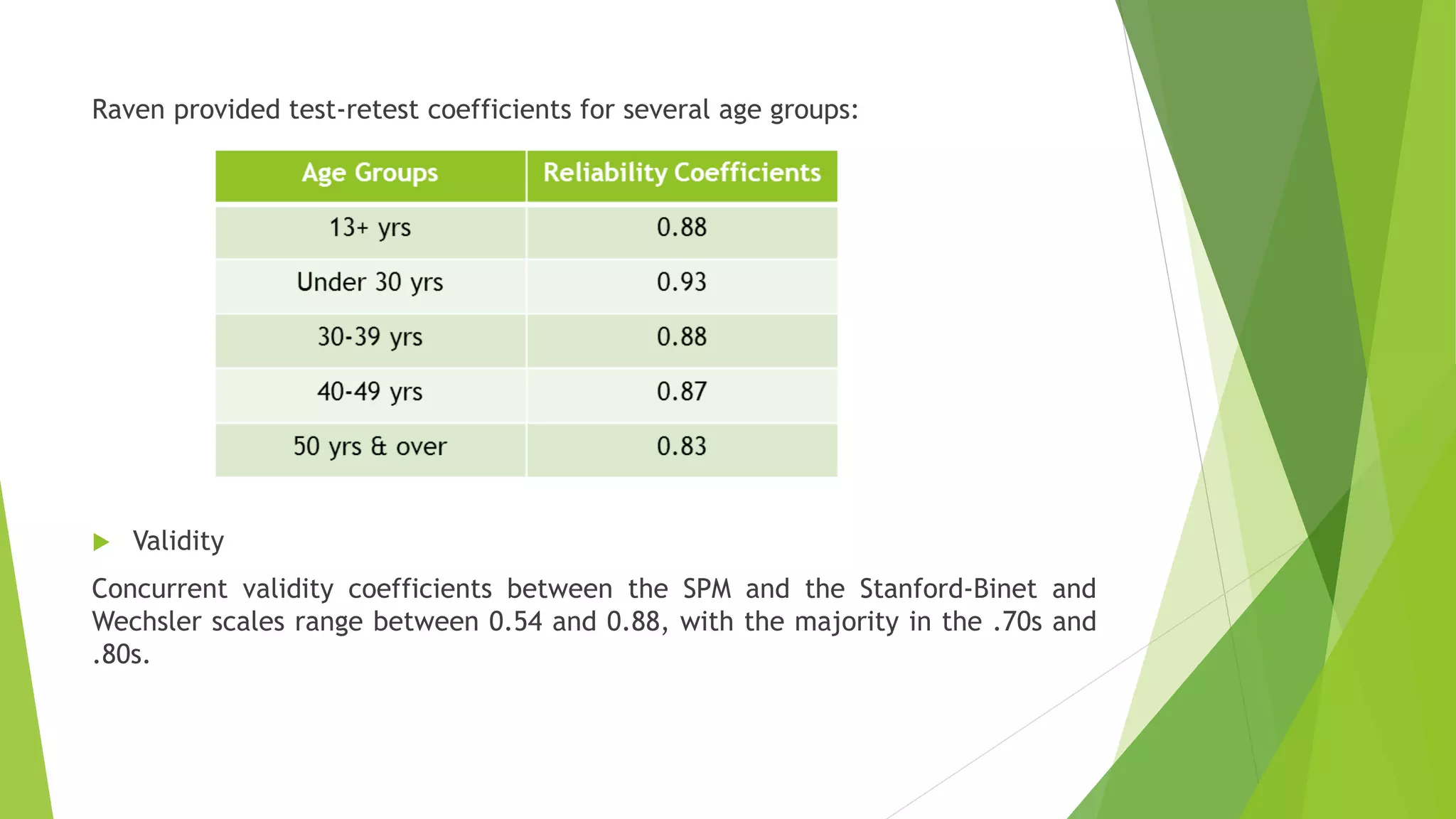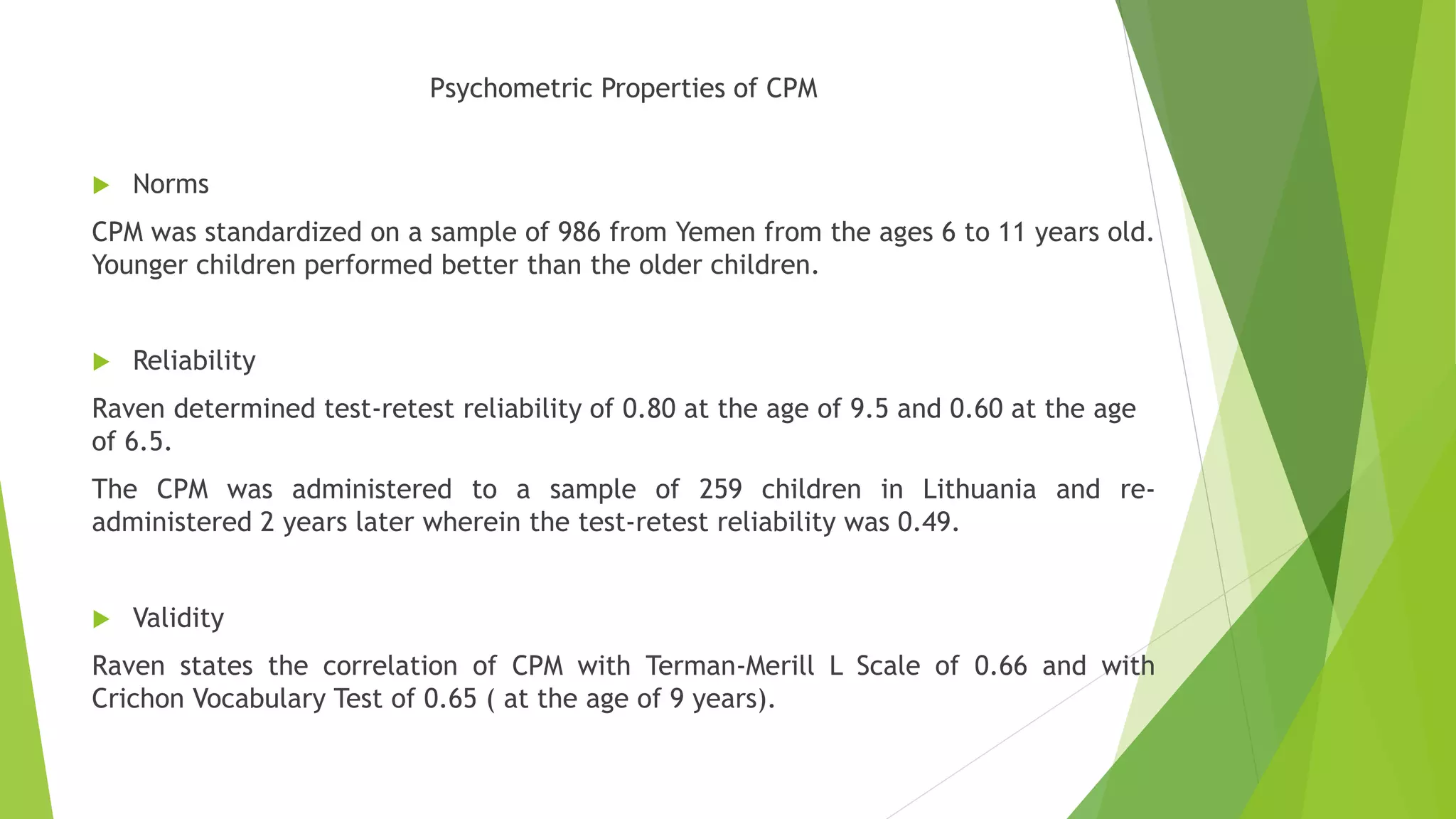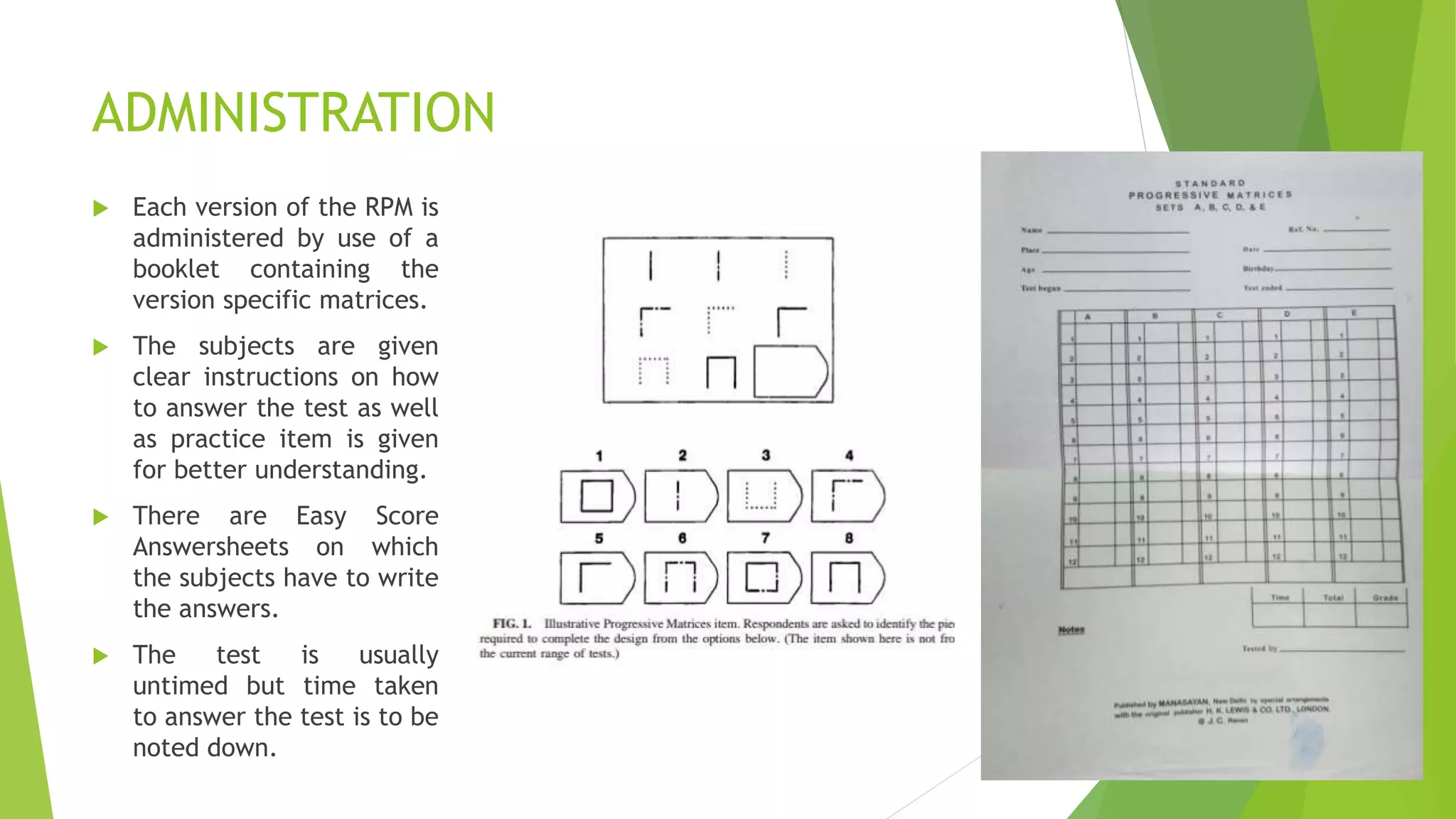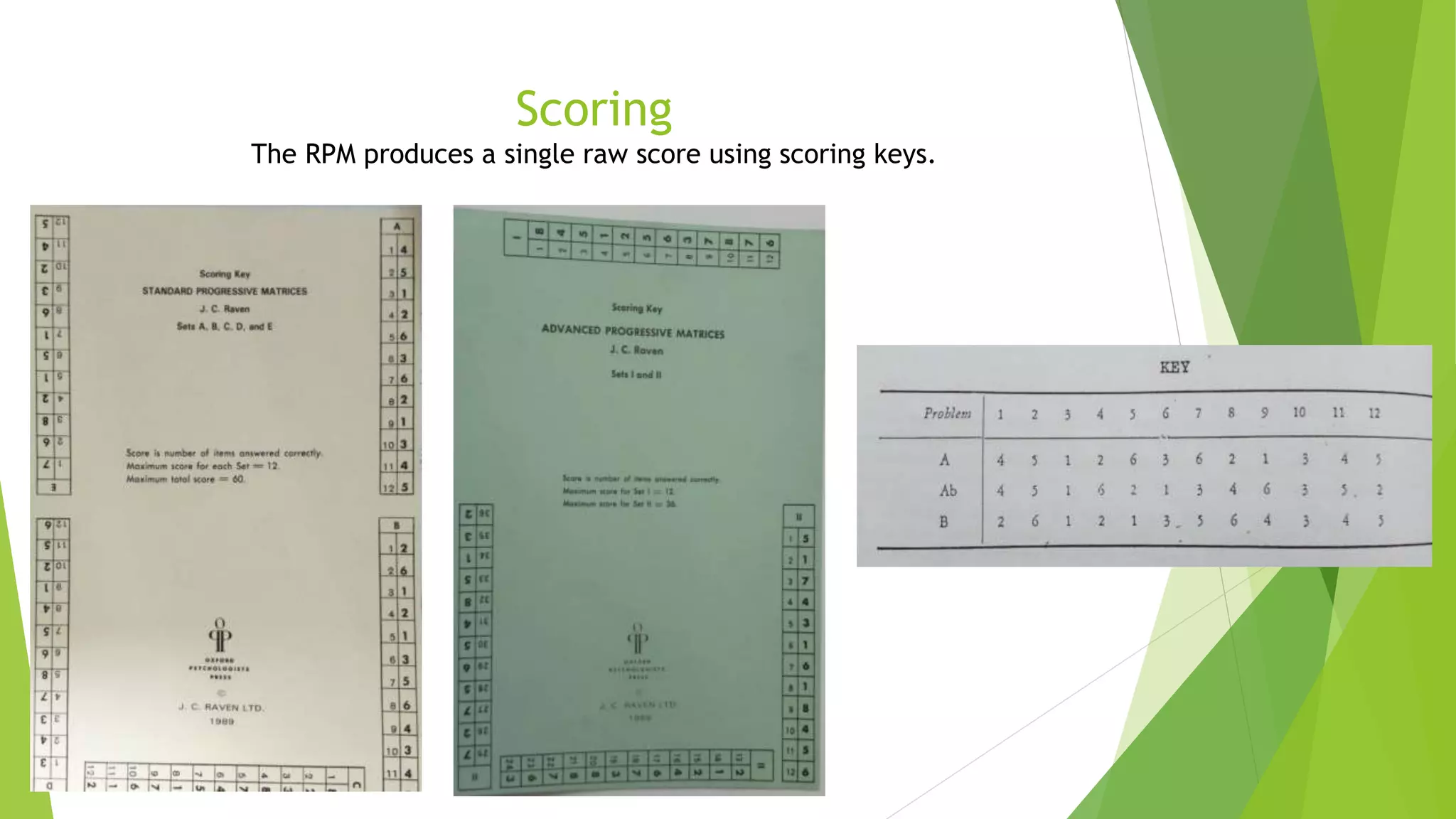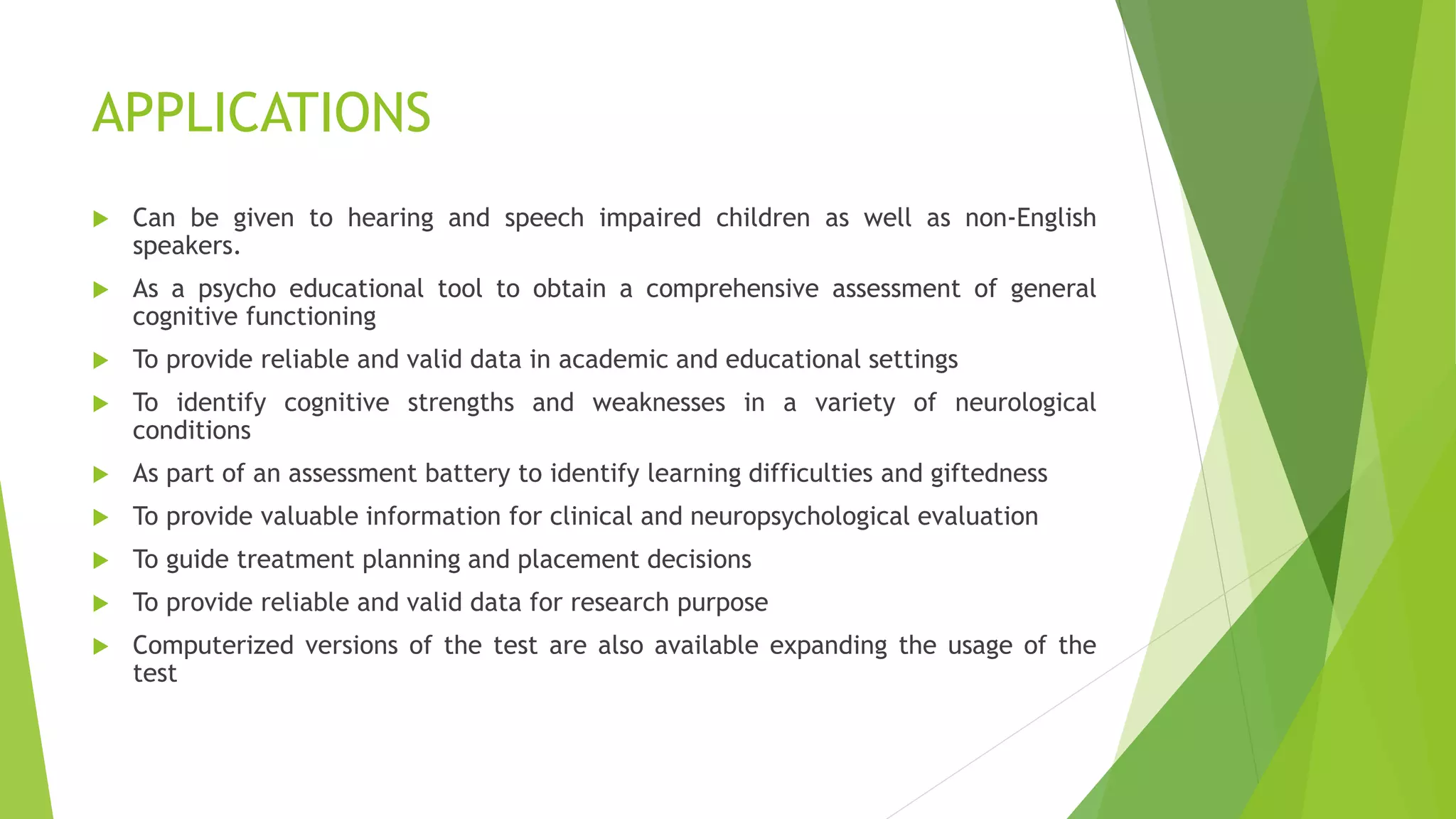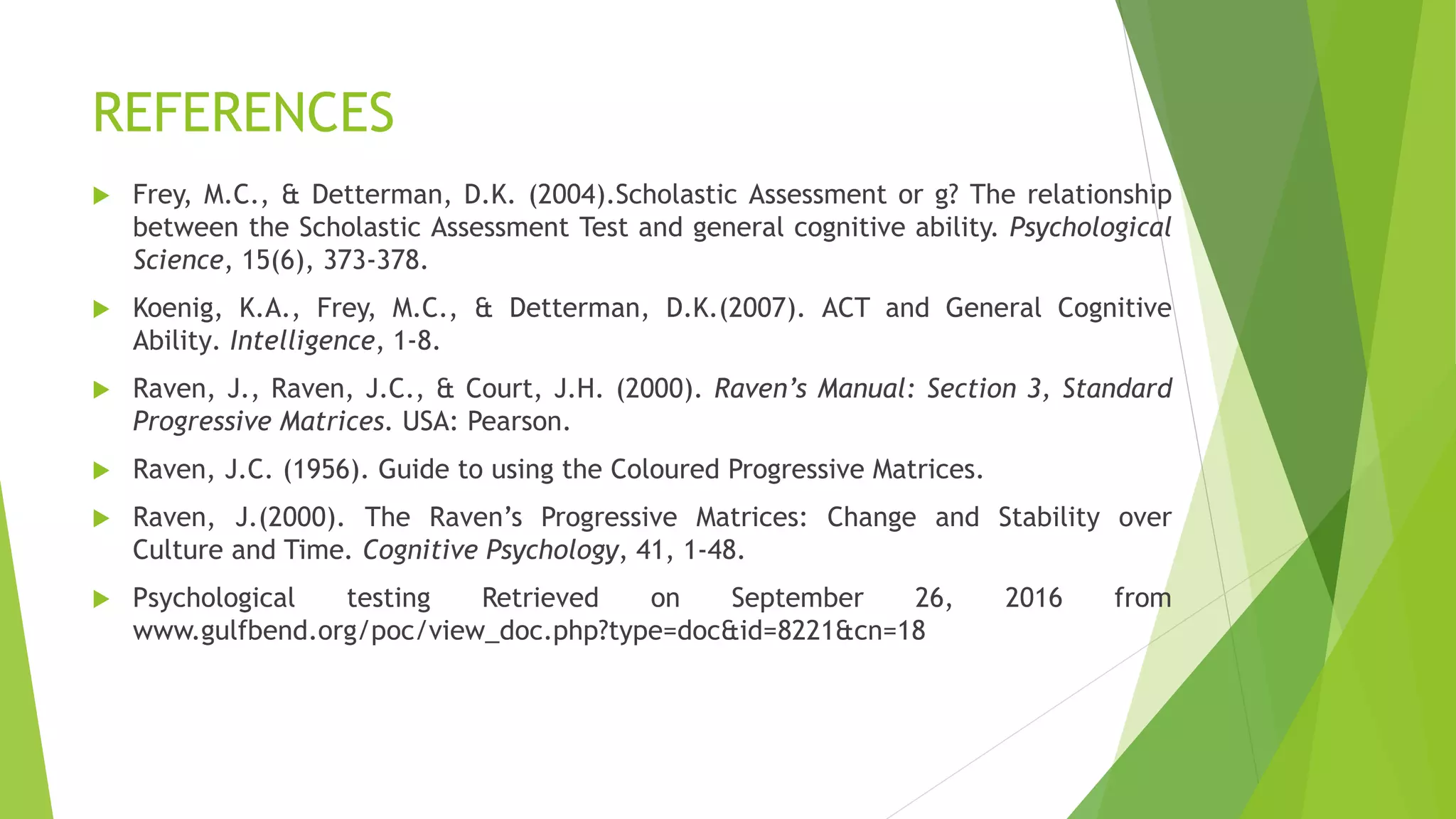Raven's Progressive Matrices is a non-verbal intelligence assessment tool designed to measure abstract reasoning in both children and adults, comprising three tests: Standard (SPM), Advanced (APM), and Coloured (CPM) Progressive Matrices. These tests have extensive research backing their reliability and validity, with applications in educational, clinical, and neuropsychological settings. The RPM is known for its ease of administration and effectiveness in assessing cognitive abilities across diverse populations.
